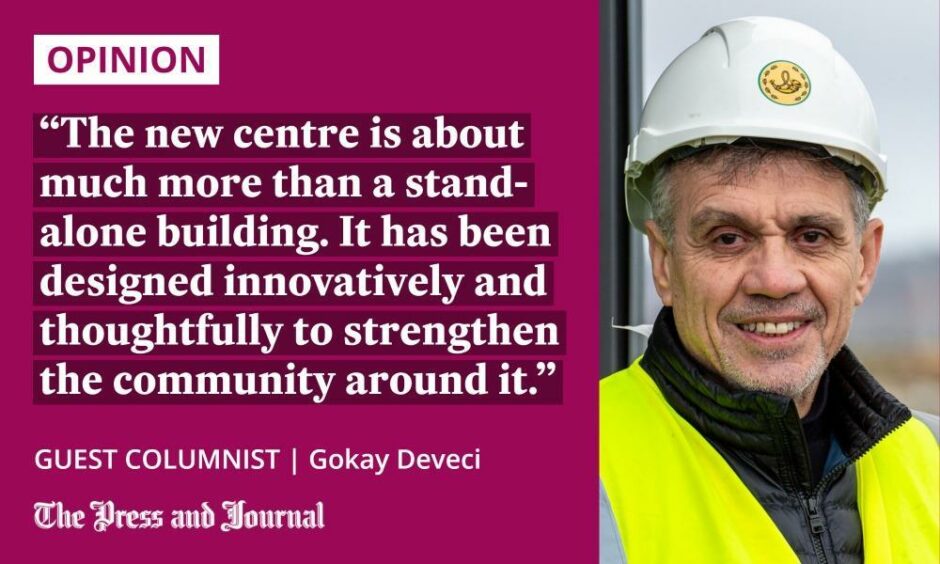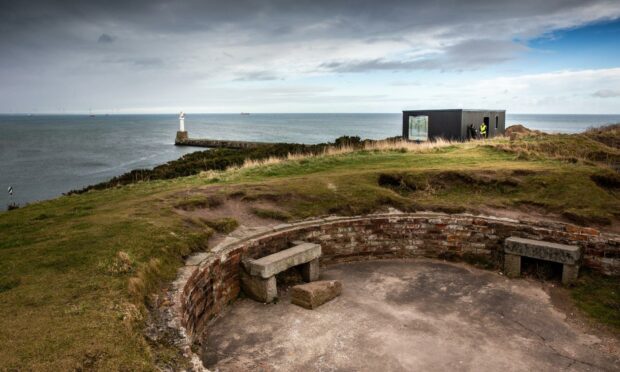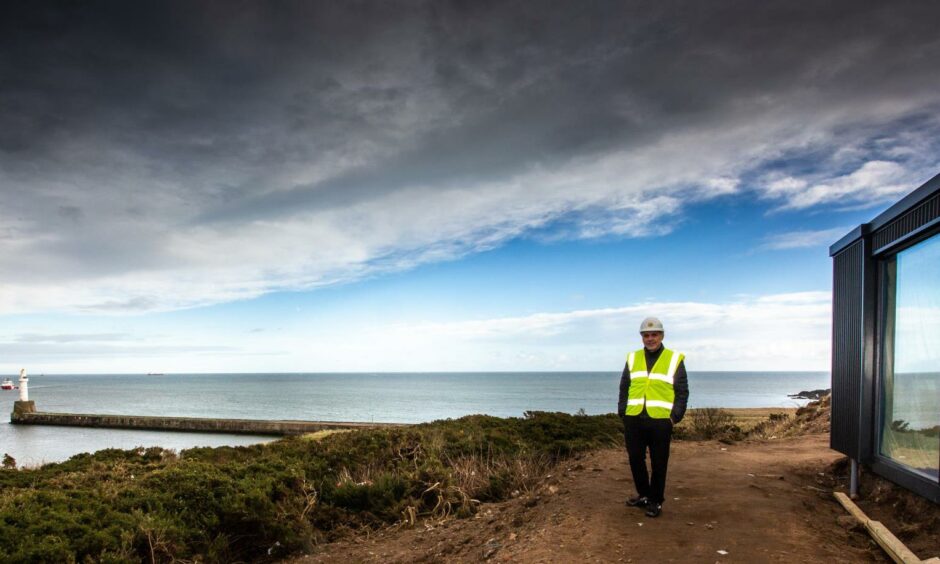Back in 2018, myself and a team of students from The Scott Sutherland School of Architecture at RGU, became involved with charitable organisation, Greyhope Bay, with the aim of creating a world-class marine experience centre and visitor attraction that would connect Aberdeen and the north-east to our marine world.
We wanted to create an ‘off-grid’ eco-friendly facility that would become a vibrant destination in Aberdeen and a hub for the local community. With this in mind, a decision was made to repurpose shipping containers, finished with timber cladding, to make the project more affordable and to have minimal impact on site.
‘Dolphins at the Battery’ was borne – a community space with a dolphin viewing centre, cafe, education and community space – offering a ready-made canvas and unique window to the sea.

Steeped in history as the former WW2 defences, Torry Battery is considered one of the best areas in Scotland to see bottlenose dolphins and Minke whales. When the centre opens to the public on April 8, people will be able to see these amazing cetaceans in comfort from Aberdeen for the first time. Beyond this however, I see the Torry Battery dolphin centre as a community hub that allows people to connect with the natural environment and to foster better relations.
Delivering a positive impact for community at Torry Battery
The new centre is about much more than a stand-alone building. It has been designed innovatively and thoughtfully to strengthen the community around it.
A significant element of the work, for the staff and students at SSA throughout, has been to work closely with the Greyhope Bay Community Group to understand their needs.
Communities like Torry and the wider city of Aberdeen, feature a diverse mix of people, functions and applications but generally revolve around family, social ties and networks. It is an architects’ role to foster these communities and to deliver a positive impact for them.
With this in mind, we have created a multi-layered visitor experience that offers multiple ways to connect with the community. We have created educational spaces to enable visitors to learn more about the marine life on their doorstep and also a space to connect with the local community with opportunities for wildlife and heritage tours, artist-led creative workshops, community events, outdoor learning and more.
Above all, the project reflects our ambition to nurture and sustain the local communities and to bring nearby residents closer together to create a hub where people can chat and connect.
Sustainability at core of Greyhope Bay project
The centre also echoes Aberdeen and the north-east’s ambition to transition beyond oil and gas. It has sustainability at its core, operating entirely off-grid, with solar and battery power being harvested whilst rainwater treatment technology filters the water supply. All of these measures support our aims to create a low-impact, sustainable centre.
Our posh Kazuba eco-loos ♻️ going in at Torry Battery for the @greyhopebay centre…Who wants to be first to try them out?
OPENING DAY is COMING SOON👀🐬☕️🥳#sofancy #Aberdeen #greyhopebaycentre #TorryBattery #finallywehavelooshttps://t.co/fV5oGUhLK1 pic.twitter.com/NVRQEoAFWV
— Greyhope Bay (@greyhopebay) March 24, 2022
The centre’s opening marks a culmination of a journey from the original idea to construction and finally to opening this amazing centre. The project reflects the role architecture has in nurturing and sustaining our local communities and the potential to bring communities closer together.
I am really grateful to everyone who has helped deliver such a challenging and innovative project. The project offers a bright new future for Torry Battery and reaffirms the area’s environmental and historical significance.
Professor Gokay Deveci is a chartered architect and holds a professorial chair at The Scott Sutherland School of Architecture & Built Environment (SSS) at Robert Gordon University (RGU)

